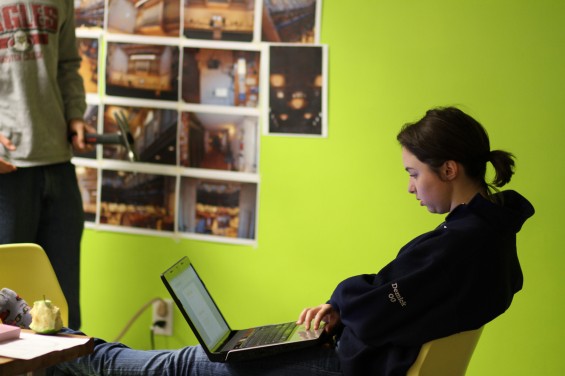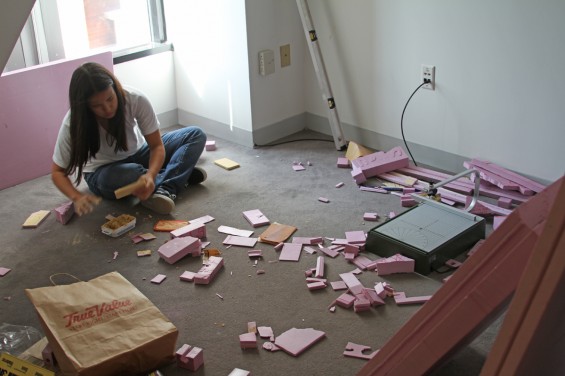
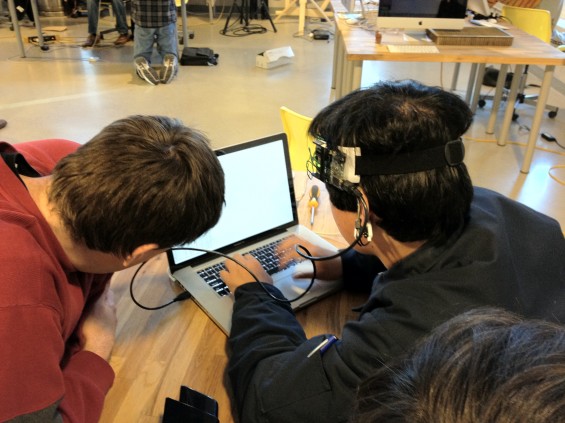
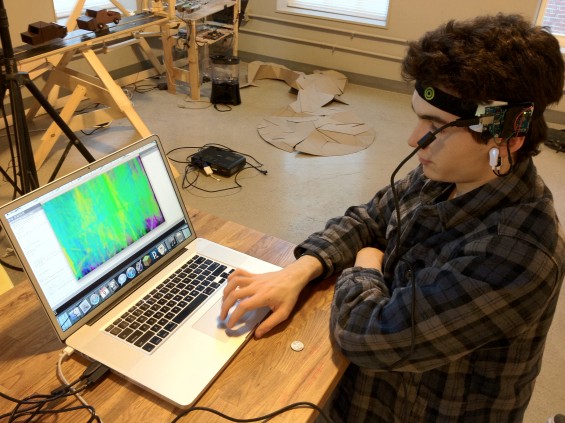
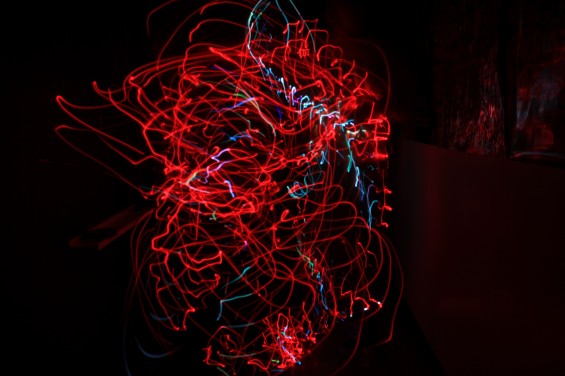
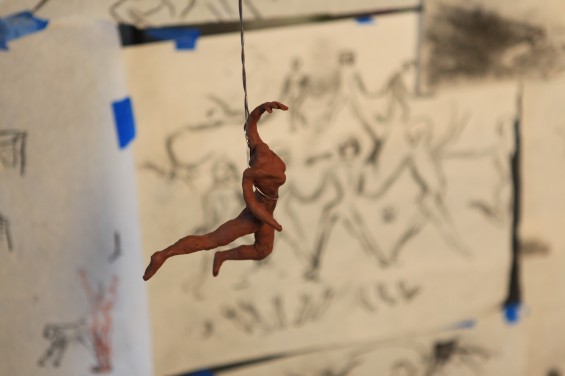





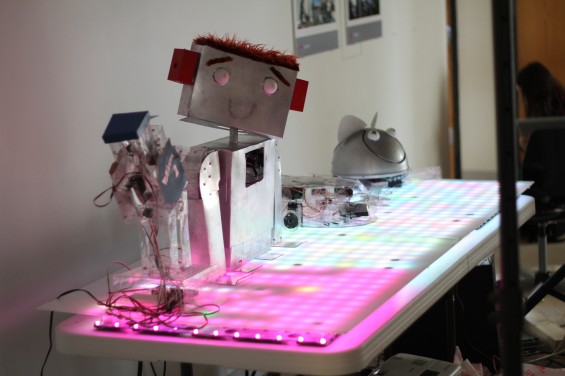
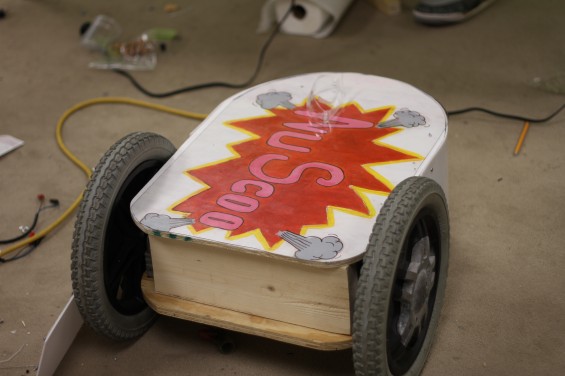
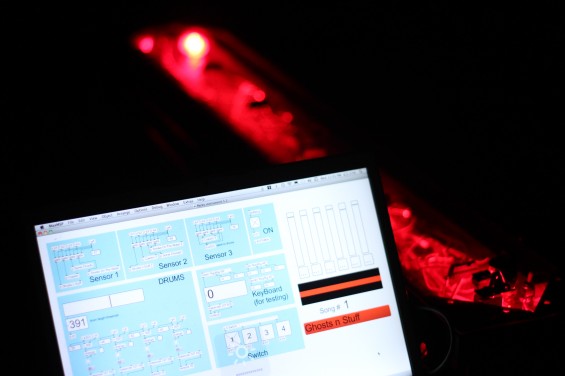
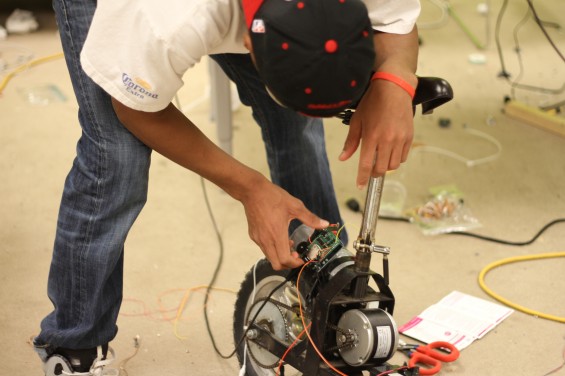
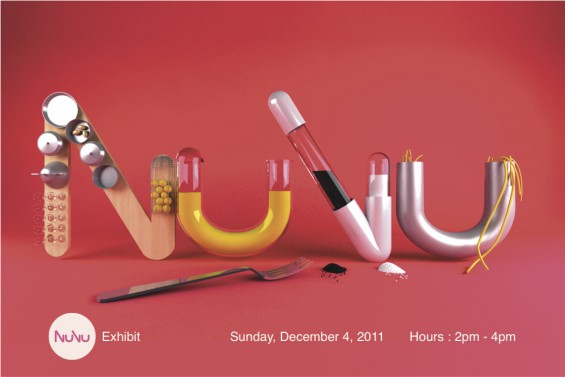
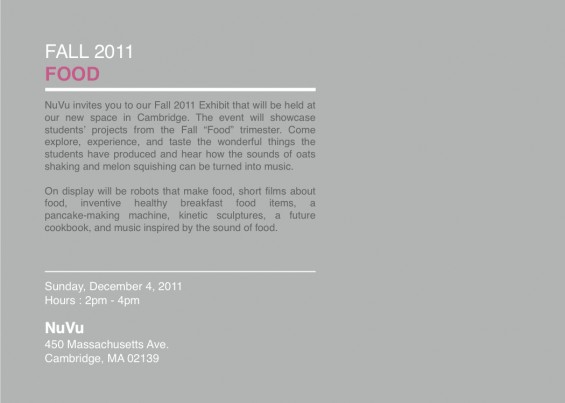
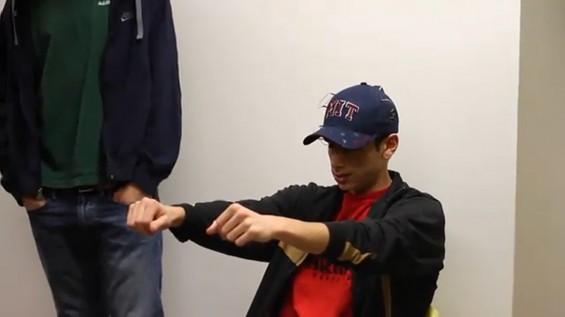 Alex demonstrates the Stay-Awake Hat by posing as a sleepy, behind-the-wheel driver. As the driver slowly begins to tilt his head, the Stay-Awake Hat sounds a high-pitch buzz and jolts the driver awake!
Alex demonstrates the Stay-Awake Hat by posing as a sleepy, behind-the-wheel driver. As the driver slowly begins to tilt his head, the Stay-Awake Hat sounds a high-pitch buzz and jolts the driver awake! 
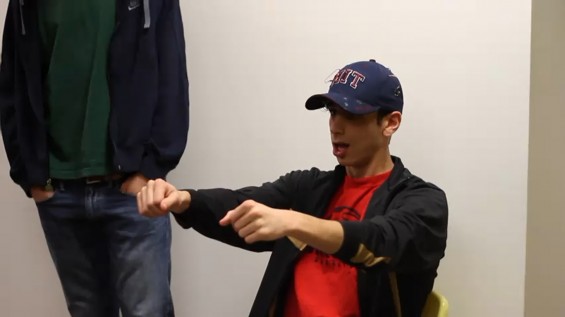
David Wang's Drawing Robot Studio will finish on a high note tomorrow: Eleven students worked on 7 different Drawing Robots!
In this studio, the students designed and built robots that are capable of creating art. The process of building included hardware, electronics, and coding. The teams produced working prototypes in only 9 days. The students' robots include a wall printer, a color fan robot, a 3D painter, a circle drawing robot, a painter that uses magnets and color, and a pencil-walking robot. The slideshow above will give you a first taste of the artistic potential of these robots.
A big Thank You to our Interns Neil and Max. They made it happen; together with David, Saeed and the students!
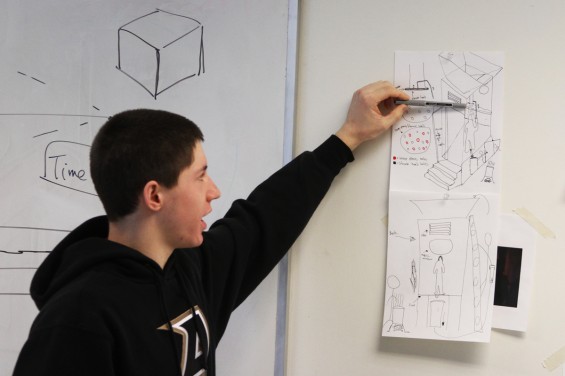
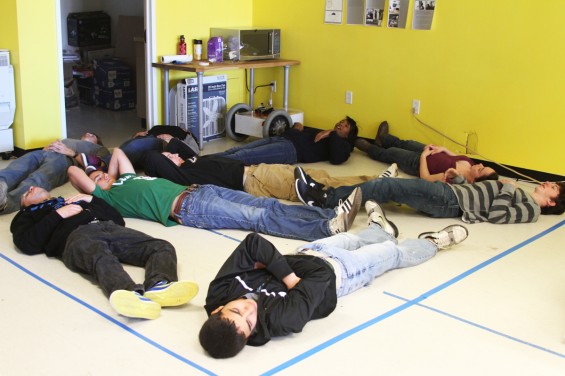
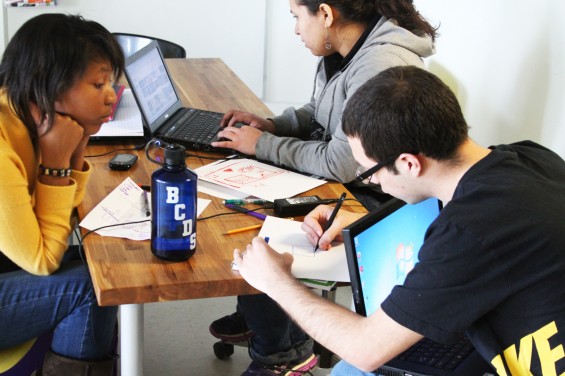
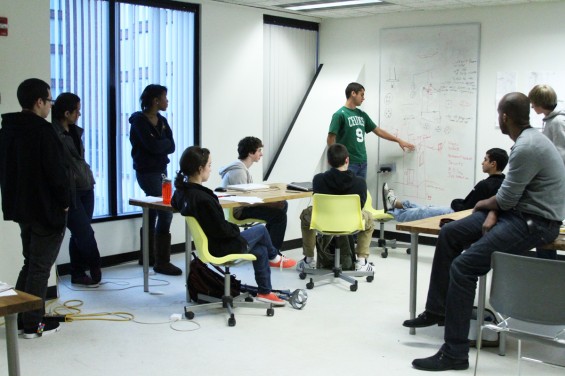
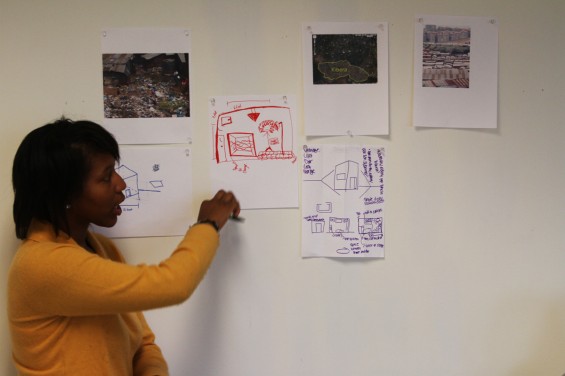

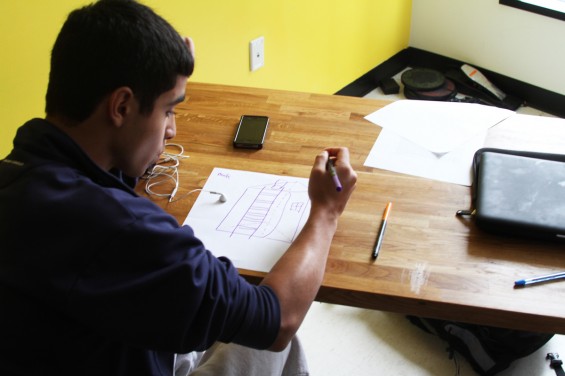
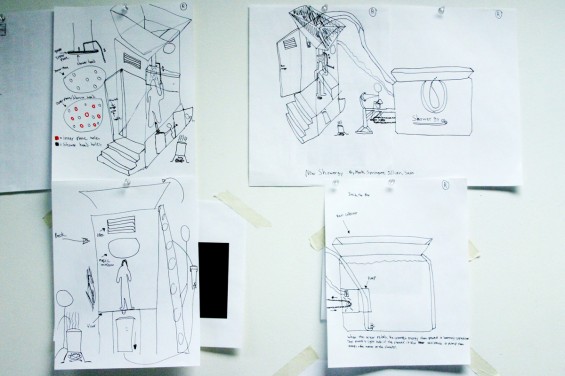
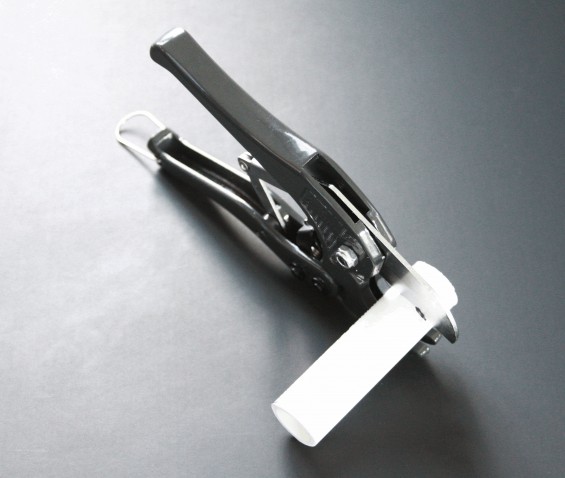
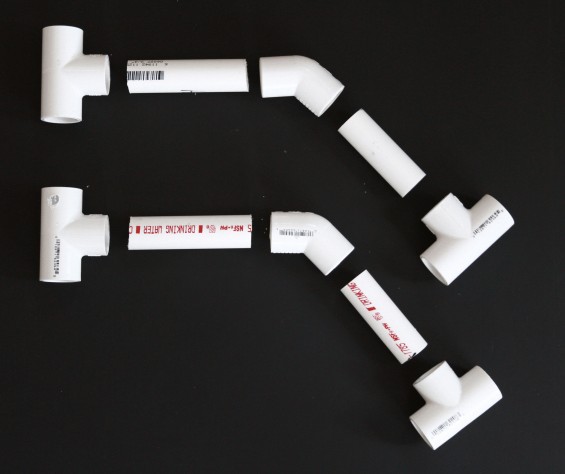
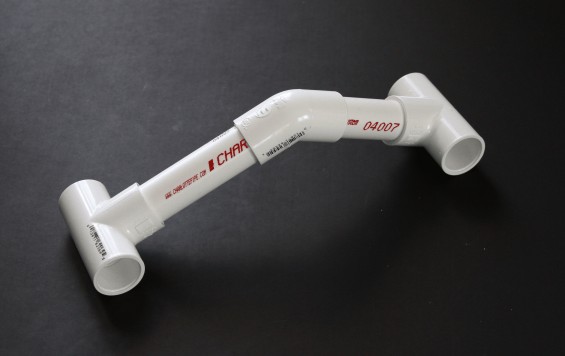

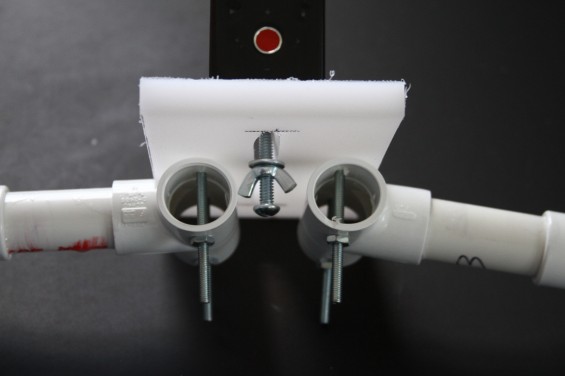

Short film on NuVu's first studio program held in Bangalore, India for 6 weeks (42 days) from April 15-May 24 2013. The NuVu-Bangalore Studio had students from across India as well as students from the United States collaboratively problem-solving and working on projects based around the theme of "flying."
Produced by NuVu Studio
Music by Delhi 2 Dublin
